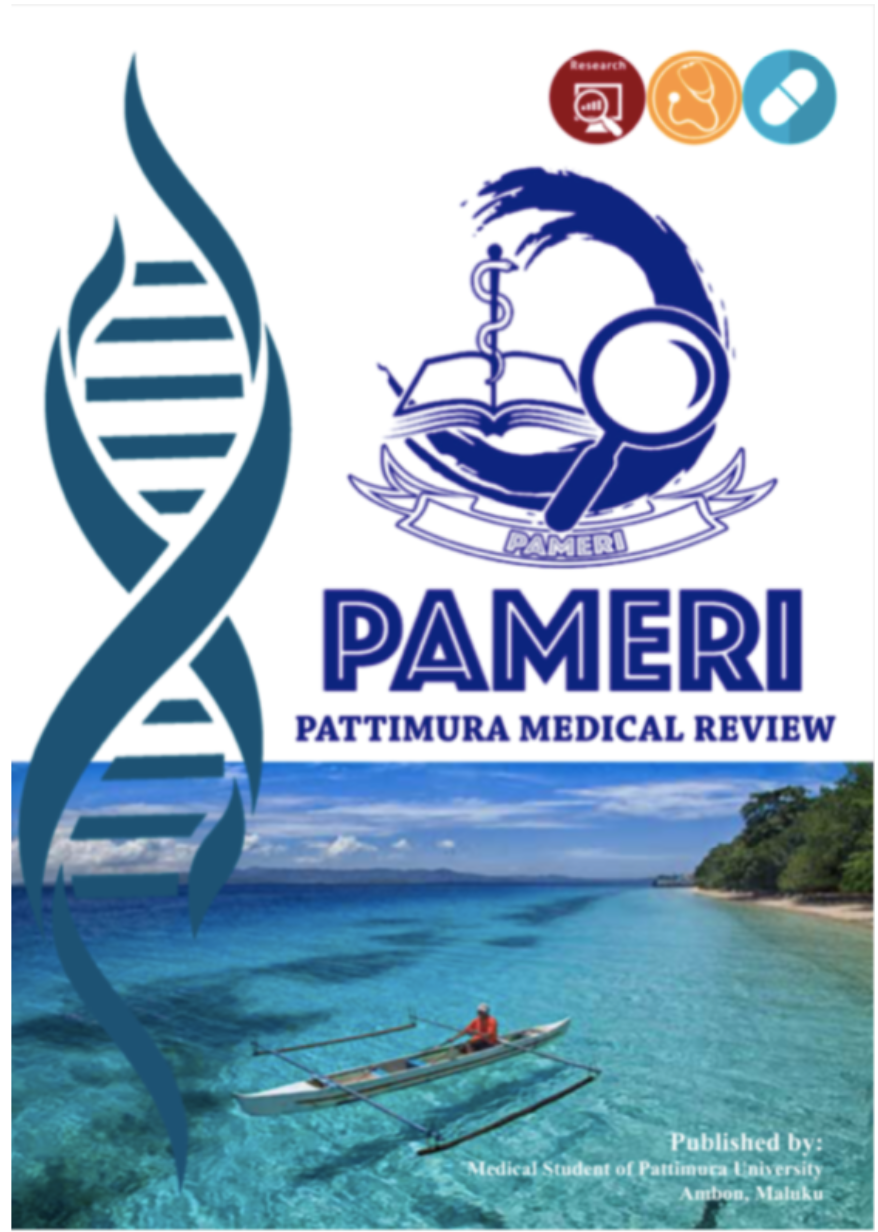GAMBARAN TINGKAT KECEMASAN PADA MAHASISWA KEPANITERAAN KLINIK DI ERA PANDEMI COVID-19 TAHUN 2022
Abstract
The clinical clerkship is one part of basic medical education and is an advanced stage to complete the medical professional education program. In dealing with COVID-19, medical personnel are at the forefront. It is not an easy thing to organize clinical clerkship activities for Medical Professional Education Students while continuing to stay at the hospital during the COVID-19 pandemic. Clinical clerkship students will sacrifice time, thought, and energy to prevent the spread of COVID-19. This condition places clinical clerkship students under the threat of psychological disorders such as anxiety. The purpose of this study was to describe the level of anxiety in clinical clerkship students in the COVID-19 pandemic era in 2022. The method used was cross-sectional on clinical clerkship students, Faculty of Medicine, University of Pattimura, with a total sample of 114 respondents. The analysis used is univariate analysis. The questionnaire used in this study was the SAS/SRAS (Zung Self Rating Anxiety Scale) questionnaire. The results showed as many as 35.1% of students experienced moderate anxiety and 16.7% of students experienced severe anxiety. The results of the research based on gender found that male respondents had a mild level of anxiety, namely 19 people (16,7%), and female gender had an anxiety level in the moderate category, reason, 36 people (31,6%). The results also show that based on where they live with their parents, most of them have an anxiety level in the moderate category, as many as 31 people (27,2%) and those who live alone (not with their family) most of them have an anxiety level in the mild category, namely as many as 25 people (21,9%). Based on the location of the rotation, the respondents were located at RSUD Dr. M. Haulussy mostly has an anxiety level in the severe category, namely as many as 19 people (16,7%); at Regional Special Hospitals (RSKD) Maluku Province mostly has an anxiety level in the mild category, namely 4 people (3,5%); at Regional General Hospital dr. H. Ishak Umarella mostly has an anxiety level in the moderate category, namely as many as 5 people (4,4%); at Al-Fatah General Hospital mostly has an anxiety level in the mild category, namely 6 people (5,3%); at Level II General Hospital Prof. dr. J. A. Latumeten Ambon mostly has an anxiety level in the moderate category, namely 7 people (6,1%); as well as the respondents whose rotation locations is at Sumber Hidup-GPM Hospital, most of them had a moderate level of anxiety, namely as many as 8 people (7,0%).
Downloads
References
2. Susanto BNA. Literatur review: dampak gangguan kesehatan mental pada petugas kesehatan selama pandemi coronavirus disease 2019. Medica Hosp J Clin Med. 2020;7(1A):261–70.
3. Sawitri H, Nora M. Persepsi dokter muda dalam menghadapi wabah coronavirus disease (COVID-19) di BLUD Rumah Sakit Cut Meutia tahun 2020. AVERROUS J Ked dan Kes Malikussal. 2021;7(1):1–14.
4. Faisal M, Ardiyansiah. Permasalahan yang mempengaruhi kecemasan tenaga kesehatan dalam penanganan COVID-19. J Kep Silamp. 2021;5(1):601–9.
5. Herni S, Gabre PG, Eva Z. Gambaran tingkat kecemasan mahasiswa dalam menghadapi COVID-19. J Kep. 2021;13(4):887–92.
6. Sutan HG, Ari U, Nissa K, Dwi S. Gambaran kesehatan mental pada tenaga kesehatan kantor kesehatan pelabuhan di masa pandemi coronavirus disease-19 (COVID-19) tahun 2021. J Ris Kes Mas. 2022;2(1):1–11.
7. Musyarofah S, Magfiroh A, Abidin Z. Studi kecemasan pada tenaga kesehatan di masa pandemi COVID-19. JPKM J Pro Kes Mas. 2021;2(1):81–6.
8. Wardiani DA. Gambaran tingkat kecemasan pada mahasiswa keperawatan Universitas Kusuma Husada Surakarta saat menjalani skripsi pada masa pandemi COVID-19. Surakarta: Universitas Kusuma Husada Surakarta; 2020. Hal. 23–8.
9. Febriyanti E, Mellu A. Tingkat kecemasan mahasiswa keperawatan dalam menghadapi pandemi COVID-19 di Kota Kupang. NURSING UPDATE J Ilm Kep. 2020;11(3):1–6.
10. Vellyana D, Lestari A, Rahmawati A. Faktor-faktor yang berhubungan dengan tingkat kecemasan pada pasien preoperative di RS Mitra Husada Pringsewu. J Kes. 2017;8(1):108–13.
11. Kartika SW, Nantyan KU. Literatur review: stigma masyarakat terhadap COVID-19. Preventia Ind J Pub Heal. 2020;5(2):107–11.
12. Intan VA, Putri RM, Nisa H. Sosiodemografi dan tingkat kecemasan mahasiswa pada masa pandemi COVID-19. J Psikol Sos. 2022;20(1):16–24.
13. Pratiwi NMS, Dewi Ni LPA. Gambaran tingkat kecemasan masyarakat terhadap pandemi COVID-19. J Med Usa. 2021;4(2):21-32.
14. Halawa A. Hubungan dukungan keluarga dan strategi penanganan kecemasan pada perawat yang merawat pasien penderita COVID-19. J Keperawat. 2021;10(1);18–28.
15. Lubis N A. Faktor yang mempengaruhi kecemasan pada tenaga kesehatan dalam upaya pencegahan COVID-19. 2020. Hal. 1–7.
16. Asriyani D, Sriningsih N. Hubungan tingkat kecemasan penggunaan alat pelindung diri (APD) terhadap penularan COVID-19 pada perawat di Ruang Rawat Inap Rumah Sakit Umum (RSU) Kabupaten Tangerang tahun 2020. J Nusa Hasa. 2021;1(1):95–101.
17. Hanggoro AY, Suwarni L, Selviana, Mawardi. Dampak psikologis pandemi COVID-19 pada tenaga kesehatan: a studi cross-sectional di Kota Pontianak. J Kes Mas Indones. 2020;15(2):13-8.
18. Babakal A, Manampiring AE, Wariki WMV. Kepatuhan penggunaan alat pelindung diri dan tingkat kecemasan dengan kejadian COVID-19 pada tenaga kesehatan di RSUP Prof. dr. R. D. Kandou Manado. JUIPERDO J Ilmi Per Manad. 2021;9(1);177-92.
Copyright (c) 2023 PAMERI: Pattimura Medical Review

This work is licensed under a Creative Commons Attribution-NonCommercial-ShareAlike 4.0 International License.











